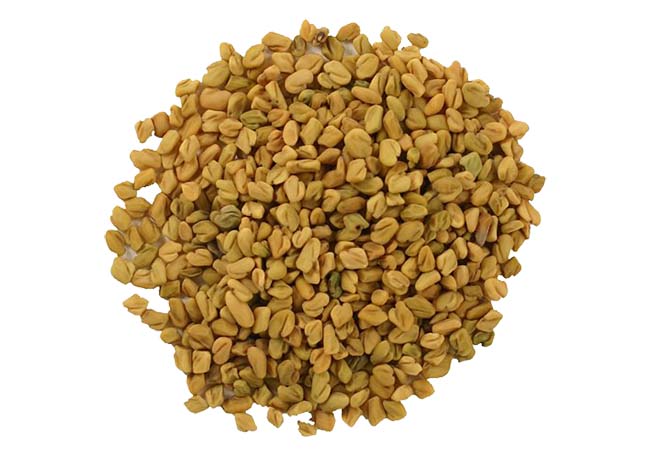Fenugreek (Trigonella foenum-graecum L.) is an important but less known ingredient of the globally famous South Asian curries. The specific name ‘foenum graecum’ refers to the corresponding meaning as Greek Hay. Fenugreek is an ancient crop and has been found to be associated with major civilizations across Asia and Africa. Commonly known by its Hindi vernacular name ‘methi’ is an annual legume crop and a traditional spice plant. Although widely cultivated across South Asian nations including India, Pakistan, Afghanistan, Nepal, Bhutan and Bangladesh as a spice crop; it is better known in other parts of the world as an annual forage legume belonging to the same Fabaceae family as alfalfa, the queen of forages. The crop is more commonly grown in India and Pakistan compared to other South Asian nations. The crop is also grown in neighboring Iran and China. Across the globe the crop is grown in varied amounts in parts of the US, Canada, Argentina, the UK, Russia, Mediterranean Europe, North Africa, Middle East, South East Asia, Taiwan, Japan and Australia. Several species of fenugreek (over 25) are reported across the globe; however, Trigonella foenum-graecum is the most agriculturally well known species.
The herbaceous plant has indeterminate growth habit with trifoliate leaves and legume pods containing 10-20 golden brownish seeds. This plant species has been used both in Ayurveda and Traditional Chinese Medicine in treating a number of human diseases. Both leaves and seeds have rich medicinal properties due to presence of steroidal sapogenins (such as diosgenin, yamogenins, tigogenins, dihydroxysapogenins etc), alkaloids (example fenugreekine), flavonoids, complex carbohydrates (most well reported being galactomannan) and essential amino acids (best known is 4-hydroxy isoleucine). Due to the presence of such important phytochemicals the seeds have been fund to have significant properties in reducing blood sugar and blood cholesterol levels. As such in addition to its traditional use as a spice and forage crop, the plant has attracted the pharmaceutical, nutraceutical and functional food industries around the globe.
The crop is however reported to demonstrate strong Genotype X Environment interaction; and as such locally adapted cultivars of fenugreek will be suitable for optimal production or yield in different agro-ecological conditions. Fenugreek is suitable for short term crop rotations and grows without major agronomic challenges under both dry land and irrigated conditions suitable for semi-arid regions. However, the crop grows well without irrigation directly under rainfed conditions. Forage production in case of fenugreek has been found to both qualitatively and quantitatively better in semi-arid regions of the world. The crop is bloat free unlike alfalfa. The fenugreek forage quality with respect to both protein and fiber contents are similar to alfalfa. It is an excellent chemurgic crop and has been the centre of several global medical trials exploring the medicinal properties of its leaves and seeds. This fast and easy growing annual forage legume has been found to be suitable for the low input agricultural systems of the dry areas of the Sub Saharan Africa, Asia, and Latin America. This low water requiring climate resilient crop has the potential to be grown as forage crop or medicinal herb or even as spice crop. Fenugreek can be mixed with hay or fodder for feeding cattle and livestock. Lactating animals can be given a diet mixed with fenugreek seeds to help milk letting as the fenugreek has been well documented as an important galactagogue (substance promoting flow of milk in lactating animals).
Dry, arid and semi-arid parts of Asia, Africa and Latin America will be suitable for the cultivation of this crop that has great demand in the international markets.Although,India is the largest global producer of fenugreek as a spice crop and Pakistan too is a well known producer of the crop; however the internal demands for the crop is so high within these nations that the majority of the produce is consumed internally. Hence it does not have a major global share of the lucrative fenugreek international market as a chemurgic crop. As a result there is opportunity for other South Asian nations to capture the international market. Furthermore, being a nitrogen fixer (as a legume crop), it could be grown in fallow lands or lands otherwise unsuitable for regular agronomic production. The crop being low in water requirement and as a nitrogen fixer can be effectively incorporated in crop cycles as well as used in reclamation of non-productive soils across Afghanistan. The extensive use of synthetic chemical fertilizers and pesticides is making modern industrial agriculture susceptible to serious impacts of pollution. Hence as an alternative; Organic Agriculture has become extremely popular around the globe. Being a natural nitrogen fixer, fenugreek crop has the potential for use in Organic Agriculture as a healthy, chemical free, green manure for growing other crops like small and large grain cereals, vegetables or even ornamental plants.
The low agriculture inputs necessary for the crop has the potential for being picked by poor and marginal farmers of Afghanistan and thereby making the crop suitable for the low input agricultural system in operation in South Asian nations including Afghanistan. I humbly request the Government of Afghanistan to increase the acreage for fenugreek (or methi) production in dry, arid and semi-arid parts of Afghanistan as a green manure, spice and forage crop; and also for capturing international markets for the pharmaceutical, nutraceutical and functional food industries. New locally adapted cultivars of fenugreek will be suitable for production in the dry and semi-arid parts of Afghanistan.
Home » Opinion » Fenugreek Has Great Opportunities for Farmers in Afghanistan
Fenugreek Has Great Opportunities for Farmers in Afghanistan
| Saikat Kumar Basu

